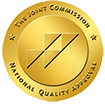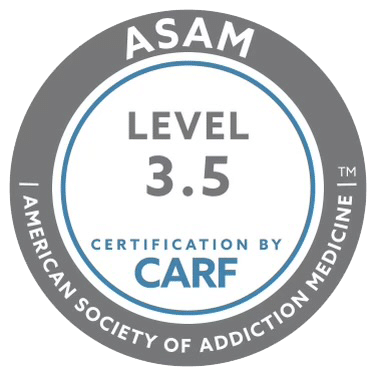Discover the path to recovery through short-term rehabilitation for addiction. Find hope and reclaim your life with effective treatment modalities.
Understanding Addiction Rehabilitation
When it comes to addiction recovery, rehabilitation plays a crucial role in helping individuals regain control of their lives. Short-term rehab programs offer a focused and intensive approach to help individuals overcome substance abuse issues. These programs typically take place in a residential treatment setting, where individuals receive comprehensive care and support.
Short-Term Rehab Overview
Short-term rehab programs are designed to provide individuals with the necessary tools and support to begin their journey of recovery. The average stay in a short-term rehabilitation program is about 20 days, with some patients being discharged in as little as 7 to 14 days. The length of stay is determined by the patient’s progress in recovery and rehabilitation, as assessed by a multidisciplinary team of rehabilitation specialists.
Short-term rehab focuses on facilitating recovery and helping patients regain strength, health, and function lost due to addiction-related issues. Unlike acute care hospitals, where the focus is primarily on treating the illness or injury, short-term rehab creates a different care environment that is centered around the individual’s recovery journey.
Importance of Active Participation
Active participation is a key aspect of short-term rehab programs. Patients are expected to be actively involved in formulating and implementing their treatment plan. This includes participating in a minimum of 3 hours of therapy daily, which may involve physical, occupational, and speech therapy. Additionally, patients are encouraged to engage in exercises and activities between therapy sessions to enhance their progress.
The success of short-term rehab greatly relies on the patient’s active involvement and effort during the rehabilitation process. Patients are expected to bring motivation, determination, cooperation, and hard work to their recovery journey. By actively participating in therapy sessions, following treatment plans, and embracing healthy lifestyle changes, individuals can maximize their chances of successful recovery and a return to normal life.
Understanding the overview of short-term rehab programs and the importance of active participation is crucial for individuals seeking addiction recovery. These programs provide a focused and intensive approach, offering individuals the support and resources they need to overcome substance abuse issues and embark on a path to lasting recovery.
Factors Influencing Short-Term Rehab
When considering short-term rehabilitation for addiction, various factors come into play that can influence the overall success and outcomes of the program. Two key factors that significantly impact short-term rehab are the duration of the stay and the patient’s active involvement in the recovery process.
Duration of Stay Factors
The average duration of a stay in a short-term rehabilitation program is approximately 20 days, with some patients being discharged as early as 7 to 14 days. The length of stay is determined by the patient’s progress in recovery and rehabilitation, as assessed by a multidisciplinary team of rehabilitation specialists.
The specific factors that influence the duration of a short-term rehab stay can vary from person to person. Some of these factors include:
- Severity of addiction: Individuals with more severe addiction issues may require a longer duration of treatment to address the underlying causes and develop effective coping strategies.
- Co-occurring disorders: The presence of co-occurring mental health disorders alongside addiction can impact the length of stay, as it may require additional therapy and support to address both conditions simultaneously.
- Individual progress and response to treatment: The rate at which an individual progresses in their recovery journey and responds to the treatment interventions can affect the recommended length of stay.
It’s important to note that the duration of short-term rehab programs may vary, ranging from a few weeks to several months, depending on individual needs and treatment plans. The primary goal is to provide individuals with an intensive and focused approach to addiction treatment within a relatively short timeframe.
Patient’s Role in Recovery
Active participation by the patient is crucial in short-term rehab for addiction. Patients are expected to be actively involved in formulating and implementing their treatment plan. They are required to participate in a minimum of 3 hours of therapy daily, which may include physical, occupational, and speech therapy, as well as engage in exercises and activities between therapy sessions.
The level of success in recovering and returning to normal life is significantly influenced by the patient’s active involvement and effort during rehab. Patients are encouraged to bring motivation, determination, cooperation, and hard work to the rehabilitation process. By actively participating in therapy sessions, adhering to the treatment plan, and engaging in activities that promote healing and recovery, patients maximize their chances of achieving positive outcomes.
Short-term rehab programs often provide individuals with a foundation for ongoing sobriety and the skills needed to transition into long-term recovery programs if necessary. They offer a structured environment where individuals can receive the necessary support, therapy, and aftercare planning to begin their recovery journey. Through active participation and a commitment to personal growth and change, patients can make significant strides in their recovery during their time in short-term rehab.
Success Rates and Statistics
When considering addiction rehabilitation, it is essential to understand the success rates and statistics associated with different treatment options. In this section, we will compare short-term and long-term rehab programs and explore the impact of dual diagnosis on treatment outcomes.
Short-Term vs. Long-Term Rehab
Short-term rehab programs typically have a success rate of around 20%, while long-term rehab programs have a success rate of approximately 50%. These success rates highlight the importance of considering the duration of treatment when choosing a rehab program.
While short-term rehab programs may be suitable for individuals with less severe addiction issues or those who have significant responsibilities outside of treatment, long-term rehab programs often offer more comprehensive and intensive support. Long-term programs provide individuals with additional time to address the underlying causes of addiction, develop coping strategies, and establish a solid foundation for sustained recovery.
It’s important to note that success rates can vary depending on various factors, including the individual’s commitment to treatment, the presence of co-occurring disorders, and the availability of support systems after completing the rehab program.
Impact of Dual Diagnosis
Dual diagnosis refers to the presence of both a mental health disorder and a substance use disorder. Approximately half of all individuals with severe mental illness have a co-occurring substance use disorder. Dual diagnosis can add complexity to the treatment process and may require specialized care.
Research suggests that individuals with dual diagnoses experience more difficulties in the community, such as homelessness and hospitalization. However, integrated outpatient treatment that addresses both mental illness and substance abuse has been found to result in high rates of engagement, reduced institutionalization, and remission of substance abuse for many patients.
For individuals with dual diagnoses who have not responded to outpatient treatment, long-term residential treatment has been found to be effective. Patients in the long-term program experienced improvements in various areas, including treatment engagement, abstinence maintenance, and avoiding homelessness.
While residential treatment for dual diagnosis patients provides intensive services and safe housing at a lower cost than inpatient treatment, studies have shown modest improvements in substance abuse and hospitalization rates. The duration of treatment in residential programs may be too brief to consolidate gains. However, longer stays in residential treatment programs have been associated with better outcomes, providing individuals with a safe and stable environment to learn necessary skills for maintaining abstinence and facilitating successful transition back to the community.
Understanding the impact of dual diagnosis and considering the appropriate duration of treatment can help individuals make informed decisions about their rehab options. It is crucial to seek professional guidance and choose a program that best meets the unique needs and circumstances of the individual seeking recovery.
Treatment Approaches for Addiction
When it comes to addressing addiction, there are various treatment approaches available. Two common approaches are therapeutic interventions and medication-assisted treatment.
Therapeutic Interventions
Therapeutic interventions play a vital role in addiction treatment. Cognitive Behavioral Therapy (CBT) and Motivational Interviewing (MI) are two widely recognized therapeutic approaches that have shown positive outcomes in reducing substance use and improving treatment results for drug addiction. CBT focuses on identifying and modifying harmful thought patterns, helping individuals develop coping skills and strategies to manage triggers. On the other hand, MI is a client-centered approach that aims to enhance motivation and commitment to change, working collaboratively with individuals to explore and resolve ambivalence towards substance use.
Therapeutic interventions are not limited to drug addiction; they are also effective in treating alcohol addiction. Behavioral therapies, such as Cognitive Behavioral Therapy, Motivational Interviewing, and Contingency Management, have demonstrated positive outcomes in addressing alcohol addiction. These therapies help individuals identify harmful thought patterns, develop coping mechanisms, and manage triggers associated with alcohol use.
Medication Assisted Treatment
Medication Assisted Treatment (MAT) is a widely used approach for individuals struggling with opioid addiction. It involves the use of approved medications, such as methadone, buprenorphine, or naltrexone, in combination with counseling and behavioral therapies. MAT has shown significant success rates in reducing substance use and improving long-term outcomes for individuals dependent on opioids.
Research suggests that people who are dependent on heroin or other opioids and receive Medication Assisted Treatment have shown to be up to 90% less likely to use drugs after two years compared to those who do not receive treatment. Additionally, the use of approved medications for Opioid Use Disorder has shown to reduce deaths from addiction by 50% or more.
It is important to note that treatment approaches should be tailored to individual needs and preferences. Therapy and medication-assisted treatment can be combined to provide holistic care and increase the chances of successful recovery. The effectiveness of treatment modalities depends on various factors, including the individual’s specific addiction, their overall health, and their commitment to active participation in the recovery process.
By considering therapeutic interventions and medication-assisted treatment, individuals struggling with addiction can find hope and embark on the path to recovery. Seeking professional guidance and support is essential to determine the most suitable treatment approach and increase the chances of long-term success.
Cost Considerations
When considering short-term rehabilitation for addiction, it’s important to take into account the financial implications and potential insurance coverage. The cost of rehabilitation can vary depending on various factors, including the treatment center and insurance coverage.
Insurance Coverage
Insurance coverage for drug and alcohol rehabilitation varies depending on individual plans. Many insurance providers, such as Blue Cross Blue Shield, Aetna, Anthem, Cigna, and Humana, may cover at least part of the rehab costs. It is crucial to review your insurance policy or contact your insurance provider to understand the extent of coverage for addiction rehabilitation. State-funded options like Medicaid programs may also be available to assist with rehabilitation expenses.
Financial Implications of Rehab
The cost of short-term rehabilitation can vary depending on the treatment center and the specific program. Inpatient rehab facilities, which provide a structured environment with around-the-clock support, may cost between $10,000 and $30,000 on average for a 30-day program. However, it’s important to note that costs can vary significantly depending on the location, amenities, and treatment approach offered by the facility.
Substance abuse and addiction can have significant financial consequences. The cost of drug use can be substantial and irreversible, with the expenses varying depending on the substance. For example, someone using one gram of cocaine per day may spend more than $32,000 a year, while someone using one gram of heroin per day may spend more than $55,000 annually. These costs can quickly accumulate and impact all aspects of life.
It’s worth considering that investing in addiction treatment can lead to long-term cost savings. Substance abuse in the United States costs the country over $600 billion dollars per year, and substance abuse treatment can help reduce this cost. By addressing addiction through rehabilitation, individuals can potentially avoid the financial burden associated with continued substance abuse and its consequences.
Exploring insurance coverage options, state-funded programs, loans, payment plans, scholarships, and sliding fee scales can help reduce or eliminate the costs of rehab services. It’s essential to research and inquire about available financial assistance programs to ensure that individuals seeking addiction rehabilitation can access the necessary treatment without additional financial strain.
Effectiveness of Treatment Modalities
When it comes to addiction rehabilitation, various treatment modalities have been proven effective in helping individuals overcome addiction and achieve lasting recovery. In this section, we will explore two widely recognized treatment approaches: Cognitive Behavioral Therapy (CBT) and behavioral therapies for alcohol addiction.
Cognitive Behavioral Therapy
Cognitive Behavioral Therapy (CBT) is a widely used therapeutic intervention that has shown success in reducing substance use and improving treatment outcomes for drug addiction. This evidence-based approach focuses on identifying and modifying harmful thought patterns and behaviors associated with addiction.
Through CBT, individuals learn to recognize triggers, develop coping mechanisms, and challenge negative thinking patterns that contribute to substance abuse. By working with a trained therapist, patients can gain insight into the underlying causes of their addiction and develop effective strategies for long-term recovery.
Studies have shown that CBT has higher success rates and lower dropout rates in cases of cannabis dependence. It has also been effective in treating other substance use disorders, including opioids and alcohol, when combined with appropriate medication-assisted treatment.
Behavioral Therapies for Alcohol Addiction
Behavioral therapies have proven to be effective in treating alcohol addiction. These therapies, such as Cognitive Behavioral Therapy, Motivational Interviewing, and Contingency Management, aim to help individuals identify harmful thought patterns, enhance motivation for change, and develop effective coping mechanisms.
Cognitive Behavioral Therapy, as mentioned earlier, focuses on modifying negative thought patterns and behaviors associated with alcohol use. Motivational Interviewing aims to enhance an individual’s intrinsic motivation to change their drinking habits, while Contingency Management provides positive reinforcements for abstaining from alcohol.
These behavioral therapies can be implemented individually or in group settings. They help individuals address the psychological and emotional aspects of alcohol addiction and provide them with the necessary tools and skills to maintain sobriety.
It’s important to note that the success of these treatment modalities can vary from person to person. However, studies consistently show that treatments for addiction, including psychotherapy, can significantly reduce substance use, improve mental health, and increase the overall quality of life for individuals suffering from addiction.
In summary, Cognitive Behavioral Therapy and behavioral therapies for alcohol addiction have proven to be effective treatment modalities in helping individuals overcome addiction. These evidence-based approaches address the psychological and behavioral aspects of addiction, providing individuals with the necessary tools and support to achieve lasting recovery.





